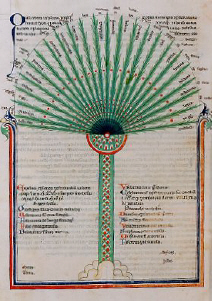The opening section [THEAETETUS] characterises the speakers and introduces the subject of discussion : the definition of knowledge. For the rest, it is concerned with method. Socrates, as in several earlier dialogues, dwells on the distinction (which must, it seems, have been difficult for the ordinary reader to grasp) between giving a number of instances of knowledge and defining the meaning of the name ‘ knowledge ’ which applies to them all. He ends by describing his own technique. Like the midwife who is past childbearing, Socrates’ function is not to produce his own ideas and impart them to others, but to deliver their minds of thoughts with which they are in labour, and then to test whether these thoughts are genuine children or mere phantoms.
The Marks of Knowledge.—The Greek word for ‘ knowledge ’, like the English, can mean either the faculty of knowing or that which is known. The problem here is to define the faculty or function of knowing, though it cannot be defined without reference to its objects. If we are to decide whether sensation or perception or belief is to be called knowledge or not, we must assume certain marks that any candidate for the title must possess. As Plato argues elsewhere,1 it is a question partly of the inherent qualities of our state of mind, partly of the nature of the objects, and from differences in the state of mind differences in the objects can be inferred. In Republic V this is applied to the contrast between Knowledge (γνώσις) and Opinion (δόξα), in the wide sense which covers all acquaintance with sensible things and judgments about them. The states of mind differ in that knowledge is infallible, whereas opinion may be true or false. It is inferred that the objects of knowledge must be completely real and unchanging, while the objects of opinion are not wholly real and are mutable.
So here, these two marks of knowledge are assumed at the outset. Socrates will point out that Theaetetus’ identification of perception with knowledge means that perception is infallible and has the real for its object (152c). Hence what the dialogue proves is that neither sense-perception nor judgment (δόξα) of the types considered possesses both these marks. We shall find that perception, although with due qualifications it may be called infallible, has not the real for its object.
The discussion falls into three main parts, in which the claims of (I) Perception, (II) True Opinion or Belief, (III) True Belief accompanied by an ‘ account ’ or explanation of some kind, are examined and rejected.
